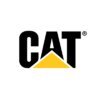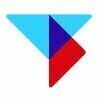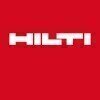Filter interviews by
Timken Production Manager Interview Questions and Answers
8 Interview questions
The grinding process involves using a rotating abrasive wheel to remove material from a workpiece.
Grinding is a machining process that uses an abrasive wheel to remove material from a workpiece.
The workpiece is held in place while the grinding wheel rotates at high speed, making contact with the material and removing small chips.
Different types of grinding processes include surface grinding, cylindrical grinding, ...
Kanban is a visual project management system that helps teams improve workflow efficiency.
Kanban originated from the Toyota Production System and is widely used in agile software development.
It uses visual boards with columns and cards to represent tasks and their progress.
Cards move across columns, indicating the status of each task (e.g., to-do, in progress, done).
Kanban promotes continuous flow, limiting work i...
Grinding defects are common in manufacturing processes and can include chatter marks, burn marks, and surface cracks.
Chatter marks are caused by vibration during grinding and appear as a series of regular marks on the workpiece.
Burn marks are caused by excessive heat during grinding and appear as discolored areas on the workpiece.
Surface cracks can be caused by a variety of factors, including improper grinding tec...
Plunge grinding and through feed grinding are two types of grinding processes used in manufacturing.
Plunge grinding involves grinding a part by plunging it into the grinding wheel, while through feed grinding involves feeding the part through the grinding wheel continuously.
Plunge grinding is typically used for parts that require a tight tolerance and a smooth surface finish, while through feed grinding is used fo...
Grinding is a process of removing material from a workpiece using an abrasive wheel. Multi-point cutting tools are tools with multiple cutting edges.
Grinding is used to achieve high precision and surface finish on workpieces.
Multi-point cutting tools are commonly used in machining operations such as milling, drilling, and turning.
Examples of multi-point cutting tools include end mills, drills, and taps.
The number ...
Grinding is a process of removing material from a workpiece using a grinding wheel. Multi-point cutting tools are tools with multiple cutting edges.
Grinding is commonly used in manufacturing to achieve tight tolerances and smooth finishes.
Multi-point cutting tools are used in machining operations to remove material from a workpiece.
Examples of multi-point cutting tools include drills, end mills, and reamers.
The nu...
Plunge grinding and through feed grinding are two types of grinding processes used in manufacturing.
Plunge grinding involves grinding a part by plunging it into the grinding wheel, creating a flat or tapered surface.
Through feed grinding involves feeding the part through the grinding wheels, creating a straight and smooth surface.
Plunge grinding is typically used for parts with complex shapes or contours, while th...
5S, Kaizen, and 7QC tools are methodologies used in manufacturing to improve efficiency and quality.
5S is a workplace organization method that involves sorting, simplifying, sweeping, standardizing, and sustaining.
Kaizen is a continuous improvement philosophy that involves making small, incremental changes to processes and systems.
7QC tools are a set of quality control tools used to identify and solve problems, in...
Timken Production Manager Interview Experiences
3 interviews found
I applied via Recruitment Consulltant and was interviewed before Dec 2023. There was 1 interview round.
(4 Questions)
- Q1. What is the grinding process
- Ans.
The grinding process involves using a rotating abrasive wheel to remove material from a workpiece.
Grinding is a machining process that uses an abrasive wheel to remove material from a workpiece.
The workpiece is held in place while the grinding wheel rotates at high speed, making contact with the material and removing small chips.
Different types of grinding processes include surface grinding, cylindrical grinding, and c...
- Q2. How to deal with unionised manpower
- Ans.
Establish open communication, respect union rules, negotiate fairly, address concerns promptly
Establish open communication channels with union representatives
Respect union rules and regulations to maintain a positive relationship
Negotiate fairly and transparently during contract discussions
Address any concerns or grievances from unionised manpower promptly and effectively
- Q3. Past achievement and projects.
- Q4. More about bearing
Interview Preparation Tips
I applied via Referral and was interviewed before Jan 2021. There were 4 interview rounds.
Interview Questionnaire
5 Questions
- Q1. What is grinding,Multi point cutting tools.
- Ans.
Grinding is a process of removing material from a workpiece using an abrasive wheel. Multi-point cutting tools are tools with multiple cutting edges.
Grinding is used to achieve high precision and surface finish on workpieces.
Multi-point cutting tools are commonly used in machining operations such as milling, drilling, and turning.
Examples of multi-point cutting tools include end mills, drills, and taps.
The number of cu...
- Q2. What is 5s,kaizen,7qc tools.
- Ans.
5S, Kaizen, and 7QC tools are all methodologies used in lean manufacturing to improve efficiency and quality.
5S is a workplace organization method that involves sorting, simplifying, sweeping, standardizing, and sustaining.
Kaizen is a continuous improvement process that involves identifying and eliminating waste and inefficiencies.
7QC tools are a set of quality control tools used to identify and solve problems, includi...
- Q3. Describe about various grinding defects.
- Ans.
Grinding defects are common in manufacturing processes and can affect the quality of the final product.
Cracks or fractures in the material being ground
Uneven surface finish
Burn marks or discoloration
Chatter marks or vibration
Incorrect wheel dressing or selection
Improper machine alignment or setup
Inadequate coolant or lubrication
Excessive wheel wear or loading
Incorrect feed rate or grinding pressure
- Q4. What is plumge grinding and through feed grinding.
- Ans.
Plunge grinding and through feed grinding are two types of grinding processes used in manufacturing.
Plunge grinding involves grinding a part by plunging it into the grinding wheel, while through feed grinding involves feeding the part through the grinding wheel continuously.
Plunge grinding is typically used for parts that require a tight tolerance and a smooth surface finish, while through feed grinding is used for hig...
- Q5. What is kanban
- Ans.
Kanban is a visual project management system that helps teams improve workflow efficiency.
Kanban originated from the Toyota Production System and is widely used in agile software development.
It uses visual boards with columns and cards to represent tasks and their progress.
Cards move across columns, indicating the status of each task (e.g., to-do, in progress, done).
Kanban promotes continuous flow, limiting work in pro...
Interview Preparation Tips
I applied via Referral and was interviewed before Jan 2021. There were 4 interview rounds.
Interview Questionnaire
5 Questions
- Q1. What is grinding,Multi point cutting tools.
- Ans.
Grinding is a process of removing material from a workpiece using a grinding wheel. Multi-point cutting tools are tools with multiple cutting edges.
Grinding is commonly used in manufacturing to achieve tight tolerances and smooth finishes.
Multi-point cutting tools are used in machining operations to remove material from a workpiece.
Examples of multi-point cutting tools include drills, end mills, and reamers.
The number ...
- Q2. What is 5s,kaizen,7qc tools.
- Ans.
5S, Kaizen, and 7QC tools are methodologies used in manufacturing to improve efficiency and quality.
5S is a workplace organization method that involves sorting, simplifying, sweeping, standardizing, and sustaining.
Kaizen is a continuous improvement philosophy that involves making small, incremental changes to processes and systems.
7QC tools are a set of quality control tools used to identify and solve problems, includi...
- Q3. Describe about various grinding defects.
- Ans.
Grinding defects are common in manufacturing processes and can include chatter marks, burn marks, and surface cracks.
Chatter marks are caused by vibration during grinding and appear as a series of regular marks on the workpiece.
Burn marks are caused by excessive heat during grinding and appear as discolored areas on the workpiece.
Surface cracks can be caused by a variety of factors, including improper grinding techniqu...
- Q4. What is plumge grinding and through feed grinding.
- Ans.
Plunge grinding and through feed grinding are two types of grinding processes used in manufacturing.
Plunge grinding involves grinding a part by plunging it into the grinding wheel, creating a flat or tapered surface.
Through feed grinding involves feeding the part through the grinding wheels, creating a straight and smooth surface.
Plunge grinding is typically used for parts with complex shapes or contours, while through...
- Q5. What is kanban
- Ans.
Kanban is a lean manufacturing system that uses visual cues to signal the need for production or movement of materials.
Kanban originated in Japan as a way to improve manufacturing efficiency.
It involves using cards or other visual cues to signal when materials or products are needed.
Kanban is often used in conjunction with just-in-time (JIT) manufacturing.
It can also be applied to other industries, such as software dev...
Interview Preparation Tips
Top trending discussions






Interview questions from similar companies

I applied via Referral and was interviewed before Dec 2023. There were 2 interview rounds.
(2 Questions)
- Q1. How you are handling manpower?
- Ans.
I manage manpower by fostering communication, training, and optimizing team dynamics for efficient production.
Conduct regular team meetings to discuss goals and address concerns, ensuring everyone is aligned.
Implement training programs to enhance skills and productivity, such as workshops on new technologies.
Utilize performance metrics to identify strengths and areas for improvement, allowing for targeted development.
E...
- Q2. How you will manage line in case of huge absenteeism??
- Ans.
To manage absenteeism, I would implement flexible staffing, prioritize tasks, and enhance communication to maintain productivity.
Assess the impact of absenteeism on production and identify critical roles that need immediate coverage.
Implement a flexible staffing plan, such as cross-training employees, to ensure that essential tasks can still be completed.
Prioritize tasks based on urgency and importance, focusing on hig...
(2 Questions)
- Q1. What is your current CTC?
- Ans.
My current CTC is structured to reflect my experience and contributions in production management, including bonuses and benefits.
My current CTC is $80,000 annually, which includes a base salary and performance bonuses.
I also receive health benefits and a retirement plan, which adds significant value to my overall compensation.
In my previous role, I negotiated a 10% increase in my CTC after successfully leading a projec...
- Q2. What is your expectation?
- Ans.
I expect a collaborative environment, opportunities for growth, and clear communication to drive production efficiency.
Collaboration: I believe in teamwork; for instance, regular meetings can enhance coordination among departments.
Growth Opportunities: I expect to develop my skills through training programs, like leadership workshops.
Clear Communication: Establishing clear channels for feedback can help address issues ...

I appeared for an interview in Sep 2021.
(1 Question)
- Q1. Related to my resume only
(1 Question)
- Q1. Basic questions from your resume
(3 Questions)
- Q1. Why are you looking for a change?
- Ans.
I am seeking a change to pursue new challenges, enhance my skills, and contribute to a dynamic team environment.
Career Growth: I feel that I have reached a plateau in my current role and am eager to take on more responsibilities and leadership opportunities.
Skill Development: I want to expand my skill set, particularly in areas like project management and team leadership, which I believe this position offers.
Cultural F...
- Q2. What are your strengths and weaknesses?
- Ans.
Identifying strengths and weaknesses helps in personal growth and team dynamics, fostering a productive work environment.
Strength: Strong Communication Skills - I excel in conveying ideas clearly, which has helped my team collaborate effectively on projects.
Strength: Problem-Solving Ability - I enjoy tackling challenges; for instance, I successfully resolved a major project bottleneck by implementing a new workflow.
Wea...
- Q3. Tell me about yourself.
Interview Preparation Tips
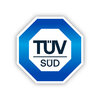
I appeared for an interview before Jun 2024, where I was asked the following questions.
- Q1. Can you explain your experience in handling quality assurance in textile testing lab
- Ans.
I have extensive experience in quality assurance within textile testing labs, ensuring compliance with industry standards.
Conducted regular inspections of raw materials to ensure they met quality specifications.
Implemented standardized testing procedures for fabric strength, colorfastness, and shrinkage.
Collaborated with production teams to address quality issues and improve processes.
Utilized statistical process contr...
- Q2. How do you manage documentation and compliance with Interational testing standards
- Ans.
I ensure compliance with international testing standards through systematic documentation, regular audits, and continuous training.
Implement a centralized documentation system to track all testing protocols and results.
Conduct regular internal audits to ensure adherence to standards like ISO 17025.
Provide ongoing training for staff on international standards and compliance requirements.
Utilize software tools for real-t...
- Q3. What steps do you follow to ensure accurate testing in fabric strength and colorfastness testing
- Ans.
To ensure accurate testing in fabric strength and colorfastness, follow standardized procedures and maintain equipment calibration.
Use standardized testing methods, such as ASTM or ISO protocols, to ensure consistency.
Calibrate testing equipment regularly to maintain accuracy; for example, using certified weights for tensile strength tests.
Conduct pre-tests on sample fabrics to identify any anomalies before full-scale ...
- Q4. Describe a situation where you had to resolve a discrepancy in test reports how did you handle it
- Ans.
I resolved a discrepancy in test reports by conducting a thorough investigation and collaborating with the team to ensure accuracy.
Identified the discrepancy during a routine review of test reports.
Gathered all relevant data, including original test results and documentation.
Collaborated with the testing team to understand the testing process and identify potential errors.
Conducted a root cause analysis to determine if...
- Q5. What instruments or machine have you used regularly for fabric or leather testing
- Ans.
I have regularly used various instruments for testing fabric and leather, ensuring quality and durability standards are met.
Tensile Strength Tester: Measures the force required to break a fabric or leather sample.
Abrasion Tester: Assesses the wear resistance of materials by simulating friction.
Water Repellency Tester: Evaluates the water resistance of fabrics and leathers.
Colorfastness Tester: Tests how well a material...
- Q6. How do you stay updated with the latest testing standards and industry requirements
- Ans.
I stay updated on testing standards through continuous learning, industry publications, and active participation in professional communities.
Subscribe to industry journals like 'Software Testing & Quality Engineering' for the latest research and trends.
Attend webinars and conferences such as the 'International Conference on Software Testing' to network and learn from experts.
Participate in online forums and communi...
- Q7. Can you walk us through your role in preparing lab audits documentations
- Q8. What challenges have you faces in maintaining turnaround time for testing and how did you overcome them
- Q9. Have you ever trained junior staff or technicians what was your approach
- Ans.
I have trained junior staff using a structured approach, focusing on hands-on experience and continuous feedback.
Developed a comprehensive training plan that included both theoretical knowledge and practical skills.
Utilized shadowing techniques, allowing junior staff to observe experienced technicians in real-time.
Conducted regular feedback sessions to address questions and reinforce learning.
Implemented role-playing s...
- Q10. What your experience with customer complaint resolution related to product quality
- Ans.
I have extensive experience in resolving customer complaints regarding product quality through effective communication and problem-solving.
Actively listen to customer concerns to fully understand the issue.
Investigated a complaint about a defective product by coordinating with the quality assurance team.
Implemented a feedback loop to ensure recurring issues are addressed and resolved.
Provided timely updates to customer...
Interview Preparation Tips

I appeared for an interview before Jun 2024, where I was asked the following questions.
- Q1. What were your previous projects?
- Ans.
Managed diverse projects focusing on team collaboration, process improvement, and client satisfaction across various sectors.
Led a team of 10 in a project to streamline operations, resulting in a 20% increase in efficiency.
Implemented a new customer feedback system that improved client satisfaction scores by 15%.
Coordinated a cross-departmental initiative to reduce costs, saving the company $50,000 annually.
Developed t...
- Q2. Skills possessed
- Ans.
I possess strong leadership, communication, and analytical skills, essential for effective team management and decision-making.
Leadership: Successfully led a team of 10 in a project that increased efficiency by 20%.
Communication: Regularly present project updates to stakeholders, ensuring clarity and alignment.
Analytical Skills: Utilized data analysis to identify trends, leading to a 15% reduction in costs.
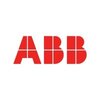
I applied via Naukri.com
Prepare for topics on current events, government regulations, corporate trends
Prepare for Management case study on complex problems, strategic issues
Interview Preparation Tips


(1 Question)
- Q1. Team management team handling
(1 Question)
- Q1. Six Sigma msa spc fmea ppap
Interview Preparation Tips
And also good soft skills questions answers required

I applied via Campus Placement and was interviewed before Feb 2023. There were 2 interview rounds.
(1 Question)
- Q1. Are you ok to relocate?
(1 Question)
- Q1. 1) Working and purpose of turbocharger? 2) Ic engine working? 3) difference between ci engine and si engine? 4) working of 4 stroke diesel engine? 5) what is heat treatment processes? 6) different engi...
- Ans.
The questions cover topics related to turbochargers, IC engines, engine parts, manufacturing processes, management skills, and interpersonal communication.
Turbocharger is a device that increases the efficiency and power output of an engine by forcing extra air into the combustion chamber.
IC engine works on the principle of internal combustion where fuel is burned inside the engine to produce power.
CI engine stands for ...
Interview Preparation Tips
- IC Engines
- Manufacturing
Be through with u r fav subjects.
Timken Interview FAQs
Tell us how to improve this page.
Timken Interviews By Designations
- Timken Line Engineer Interview Questions
- Timken Production Manager Interview Questions
- Timken Management Trainee Interview Questions
- Timken Senior Analyst Interview Questions
- Timken Customer Care Executive Interview Questions
- Timken Graduate Apprentice Trainee Interview Questions
- Timken Shift Incharge Interview Questions
- Timken Analyst Interview Questions
- Show more
Interview Questions for Popular Designations
- Assistant Manager Interview Questions
- Deputy Manager Interview Questions
- Production Engineer Interview Questions
- Senior Manager Interview Questions
- Operations Manager Interview Questions
- Production Supervisor Interview Questions
- Production Officer Interview Questions
- Production Incharge Interview Questions
- Show more
Overall Interview Experience Rating
based on 1 interview experience
Difficulty level
Duration
Interview Questions from Similar Companies
Timken Production Manager Reviews and Ratings
based on 4 reviews
Rating in categories
|
Line Engineer
648
salaries
| ₹2.4 L/yr - ₹7.2 L/yr |
|
Senior line engineer
104
salaries
| ₹3.8 L/yr - ₹8 L/yr |
|
Production Engineer
97
salaries
| ₹1.5 L/yr - ₹5.4 L/yr |
|
Line Engineer Trainee
84
salaries
| ₹2 L/yr - ₹3.2 L/yr |
|
Lead Engineer
82
salaries
| ₹5 L/yr - ₹11.6 L/yr |
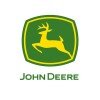
John Deere

Cummins

ABB

CNH ( Case New Holland)
- Home >
- Interviews >
- Timken Interview Questions




